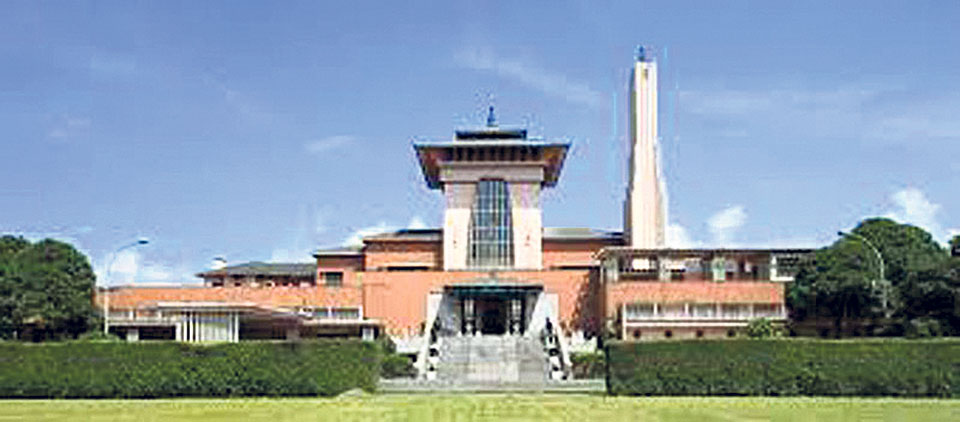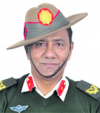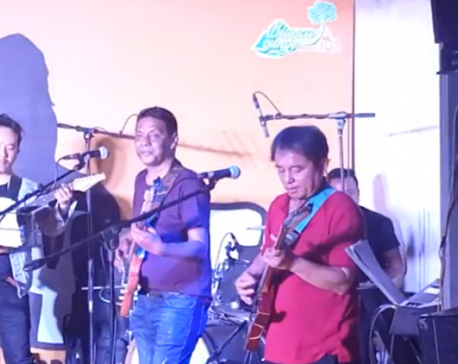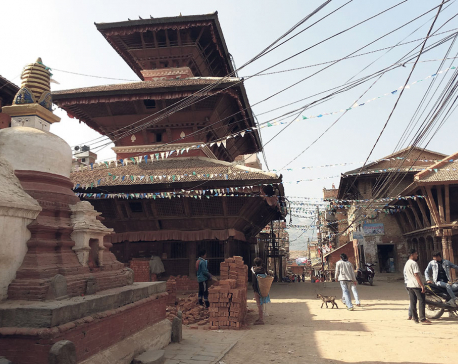
OR


Prem Singh Basnyat
Prem Singh Basnyat is a Brigadier General (Retired) of Nepal Army. PhD in military history, he has authored several books on military and political history of Nepal, besides being a visiting lecturer to universities in Nepal and abroad. He is also the Chairman of Nepal Museum Association.basnyatp@hotmail.com
Nepal may be the only country which is managing its museums without specific rules and regulations
Museums are repositories of history and heritage and remain preserved in the form of writing, picture, objects and audio-visuals for the present as well as future generations. They give the holistic picture of status of industry, pattern of settlement and agriculture, art and artistry of temples, churches, monasteries and mosques, festivities, birth and death rituals, pattern of house construction, dress making and costumes so on and so forth. In the recent times, practice of taking writings, arts and artifacts, objects and ornaments, costumes and audio visual materials of historical and cultural importance to display in different places is gaining ground.
The history of museum in Nepal dates far back. It was called Sheelkhana, which was later renamed as ‘Nepal Museum’ which was then officially established at Chhauni fully funded by the government during the reign and initiative of Rana Prime Minister Juddha Shumsher. It was subsequently extended and renamed ‘National Museum’.
One huge palace and the other structures were constructed by Bhimsen Thapa who remodeled Nepal Army in European fashion, designing uniform for the soldiers, arranging weapons and logistics, constructing barracks and founding Nepal Army headquarters where National Museum building is located at the moment. This is where many antique weapons, cannons and objects of military importance are preserved.
Later museums were developed in Bhaktapur, Hanuman Dhoka, Narayanhiti Palace, Gorkha, Surkhet and other places. The Department of Archeology (DA) is tasked to upkeep, manage and preserve museums. In recent times, private sectors, community people and semi-government organizations are working to build museums. However, Patan Museum constructed with financial assistance of Austrian government is exemplary. But in post-republic setup, trend of establishing museums in the name of political leaders is increasing. Such museums lack authenticity and scientific verification by academic experts. Interestingly, each year when the government unveils budget, little is allocated for museum construction or expansion. Apparently, no experts seem keen to take up the issue with priority. Museum development has remained a neglected issue in Nepal. Nepali policy makers have no or little idea about what museum is and how it contributes to preserving history.
Story of neglect
No ruler, since Juddha Shamsher, seems to have understood the values and importance of museum. Fifty years have passed in total indifference. Department of Archaeology has been tasked to manage museums but it cannot do so for archaeology and museology are two disticnt genres. Elsewhere, officials in archaeology department are appointed as museum curator, manager or administrator for best care, preservation and conservation of heritage. Officials in Nepal’s DA have not been able to do so. Even UNESCO Nepal office has not done much for museums.
As the first founder curator of Military Museum-Nepal, let me share some experiences about why our museums are in a sorry state. The government has not understood the real value of museums. If created a sepertate Museum Management Directorate with skilled, trained human resources with specialized knowledge and experience of museum development, it would make some difference. If such human resources are not available within Nepal, the govermment can outsource them from other countries on contract basis for few years. UNESCO and International Council of Museums (ICOM) could provide support in this regard.
It is strange that officials of DA have not taken any inititiave to enact laws for proper magagement of museums. Nepal may be the only country which is managing its museums without specific rules and regulations. The ICOM has repeatedly questioned the present status of museums in Nepal. This should ring an alarm bell for Nepal to make necessary laws to govern museums.
Government authorities are not testing the authenticity of materials collected in the mushrooming number of museums—those already opened and others in the process of being opened. There is a lack of oversight on where they get the funds from.
Museum is a self-expressive school serving as a mirror or indicator of cultural and historical heritage of a country. Contents must be classified and collected in area-specific museuem. Contents of military value and history should be preserved in Military Museum and National Museum. And all contents under display should be accompanied by information such as their names and origins. It should be such that when the visitors see these objects, they get the picture of the past.
If only the state could properly manage the Narayanhiti Palace Museum, for example, it would generate enough reveneue for its upkeep and open five more museums in the remote areas. This musuem should keep the portraits of Nepal before 1744 to give glimpse of the separate states, principalities and Greater Nepal. Unfortunately, the government of Baburam Bhattarai took the decision to build Republic Museum right by the side of Narayanhiti. Such museum should have been made elsewhere, letting Narayanhiti palace to remain in original shape.
Some good things are happening though. People are raising voice for preservation of museums. There are people with vast experience of museums. Ministry of Culture, National Planning Commission, and Department of Archaeology can utilize their experience. We can collectively build museums in municipalities and rural municipalities. We can seek idea and expertise from museum lovers, UNESCO-Nepal and ICOM-Nepal. The sooner we realize the importance of museum the earlier will we be able to find every single house, town, city, cultivation, garden, temple, mosque and monastry as a museum in itself.
Culture speaks for civilization. Museum speaks for all of them.
The auther, Brigadier General (retired) of Nepal Army, is Chairman of Nepal Museum Association, Board Member of ICOM- Asia Pacific and the first curator of Military Museum, Chhauni
You May Like This

Mothers can change the world
Globalization and modern lifestyle is posing a threat to family system in all parts of the world. Crumbling traditional family... Read More...

Soulful evening with legendary musician Harish Mathema
The premises of Bianca Lounge, Chhauni gradually began to fill with music enthusiasts as the evening got chiller and dark... Read More...

Loss of heritage is loss of living culture
KATHMANDU, Nov 28: The idols of goddess Bal Kumari and Rudryani from the Rudrayani Temple in Khokana was stolen on the... Read More...











Just In
- Challenges Confronting the New Coalition
- NRB introduces cautiously flexible measures to address ongoing slowdown in various economic sectors
- Forced Covid-19 cremations: is it too late for redemption?
- NRB to provide collateral-free loans to foreign employment seekers
- NEB to publish Grade 12 results next week
- Body handover begins; Relatives remain dissatisfied with insurance, compensation amount
- NC defers its plan to join Koshi govt
- NRB to review microfinance loan interest rate







Leave A Comment